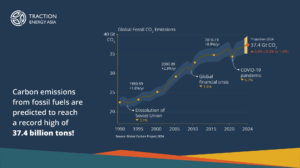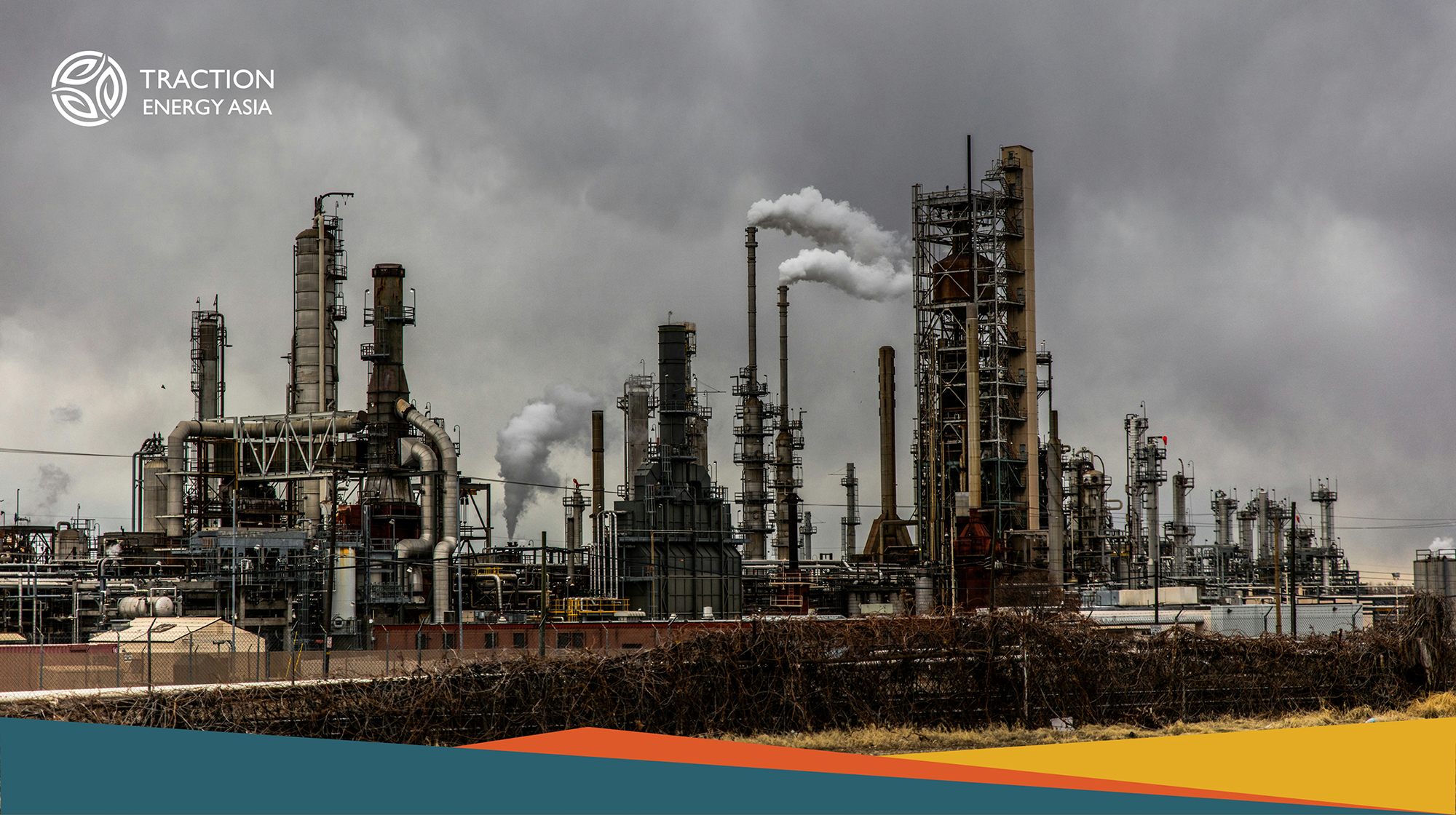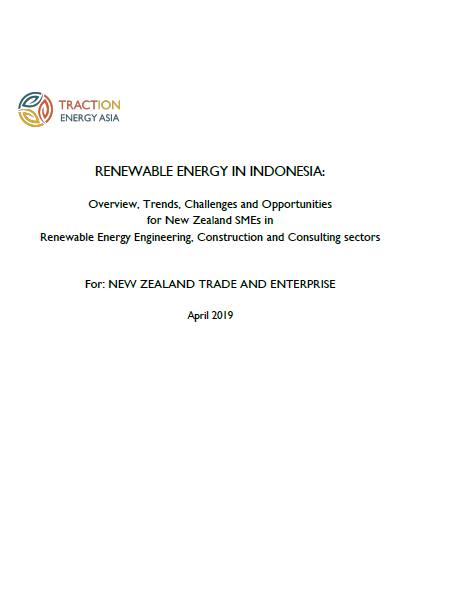The Rise of Global Carbon Emissions and Challenges Ahead
In 2024, carbon emissions from fossil fuel use are projected to hit a record high of 37.4 billion tons, an increase of 0.8% compared to the previous year. This alarming figure underscores the global struggle to reduce reliance on fossil energy and meet expected targets. Reports from the Global Carbon Project indicate that carbon dioxide emissions from fossil fuel combustion continue to rise despite several countries transitioning to clean energy. The El Niño phenomenon during the 2023–2024 period has exacerbated this situation. Droughts caused by El Niño have led to worsening deforestation and forest fires. According to data from the Ministry of Environment and Forestry (KLHK), the area affected by forest and land fires in Indonesia reached nearly one million hectares in 2023, significantly larger than in the previous year. These events have made the forestry sector a significant contributor to carbon emissions once again.

The Importance of Accelerating the Journey Towards Net Zero Emissions
Scientists emphasize that strategic actions and more robust policy implementation are urgently needed to curb global emission rates. Professor Pierre Friedlingstein from the Global Systems Institute, University of Exeter, highlighted that with over 40 billion tons of CO2 released annually, swift and decisive measures are required to achieve net-zero targets. Similarly, Dr. Glen Peters from the Center for International Climate Research (CICERO) stressed the importance of accelerating progress in all countries to ensure global emissions move towards net-zero reduction. Examining the 2024 trends, carbon emissions from various countries reflect diverse dynamics in global energy transitions. China, the world’s largest emitter accounting for 32% of the global total, recorded a 0.2% increase in emissions despite initial projections of a possible decrease. Conversely, emissions in the United States, which contribute 13% of the global total, fell by 0.6%, driven by the retirement of coal-fired power plants, reducing coal emissions to their lowest levels since 1903. On the other hand, India, the world’s third-largest fossil CO2 emitter contributing 8%, experienced a 4.6% increase in emissions. Meanwhile, the European Union, responsible for 7% of global emissions, successfully reduced its emissions by 3.8%, thanks to significant growth in renewable energy. Overall, global fossil fuel emissions are projected to increase by 1.1%, highlighting the need for more intensive efforts in climate change mitigation. However, encouraging trends are evident in 22 countries, including France, Germany, Spain, Japan, and the United States, which successfully reduced fossil fuel CO2 emissions from 2014 to 2023.

Indonesia’s Commitment to Climate Change Agenda
At the G20 Summit held at the Museu de Arte Moderna, Rio de Janeiro, Brazil, in November 2024, President Prabowo Subianto reaffirmed Indonesia’s commitment to achieving net-zero emissions before 2050. This statement underscores Indonesia’s role in the global agenda for climate change mitigation. Previously, Indonesia launched various policies, including the Greenhouse Gas Emission Reduction Action Plan (RAN-GRK) and the FOLU Net Sink 2030, as part of its national strategy. Significant additional efforts to reduce greenhouse gas (GHG) emissions include massive implementation of GHG inventories starting at regional levels. This initiative enables local governments to monitor emission sources, evaluate policy effectiveness, and develop data-driven strategies for emission reductions. For example, provinces such as West Java, Bali, and East Kalimantan have begun integrating GHG inventories into regional development planning. According to the 2023 report from the Ministry of Environment and Forestry (KLHK), regions with better GHG inventories showed emission reductions of up to 10% in the energy and transportation sectors over the past five years. In West Java, the increased use of renewable energy through the installation of solar panels in public facilities and the implementation of eco-friendly public transportation have become key contributors to emissions reduction. A similar trend is evident in Bali, which has reduced emissions in the tourism sector by adopting low-carbon tourism concepts, such as renewable energy-based hotels and more efficient waste management. These initiatives demonstrate that greenhouse gas (GHG) inventories are not just monitoring tools but also catalysts for innovation in climate change mitigation at the regional level.
Traction Energy Asia continues to demonstrate its commitment to supporting greenhouse gas (GHG) emissions reduction through strategic collaboration initiatives with various regions, such as Trenggalek, Aceh Tamiang, Gayo Lues, Bangka Tengah, and Morowali. This initiative aims to help the region integrate sustainability principles into development planning while reducing carbon emissions from key sectors. One of the key actions undertaken by Traction Energy Asia is collecting data for greenhouse gas (GHG) potential emissions inventory in each region.This involves gathering emissions data from various sources, including industry, transportation, agriculture, waste, and energy sectors. These efforts include sectoral approaches starting at the district level, reducing greenhouse gas emissions, and preserving carbon absorption areas through improved spatial planning.

Traction Energy Asia recently participated in a greenhouse gas emissions inventory in Bangka Tengah. The initiative focused on compiling baseline greenhouse gas emission data, developing green input-output environmental estimates, and formulating strategies for sustainable spatial planning policies. Moreover, the agreement also includes the development of a regional action plan (RAP) and the formulation of programs, strategies, and policies for low-carbon development, including targets for reducing greenhouse gas emissions.
Towards a Greener Future
The continuous rise in carbon emissions demonstrates that the world still has a long way to go in achieving a sustainable energy transition. Therefore, a combination of strong policies, adequate funding, and increased public awareness about the importance of environmental preservation is essential. With ongoing and future efforts, there is hope that global emission reduction targets can be met. A shared commitment to maintaining ecosystem balance is the key to ensuring the sustainability of life on Earth for future generations.
Aligned with the theme of World Pollution Prevention Day commemorated on December 2, 2024, “Clean Air, Green Earth: A Step Towards Sustainable Living,” the importance of cross-sector collaboration is emphasized. Governments, industries, and communities play a crucial role in accelerating the transition to renewable energy. By implementing effective policies and supporting green innovation, the world can significantly reduce carbon emissions and prevent the more severe impacts of climate change.




